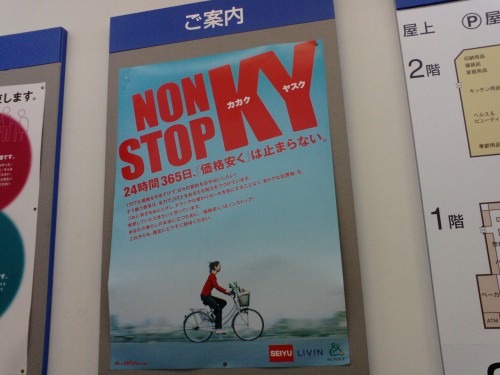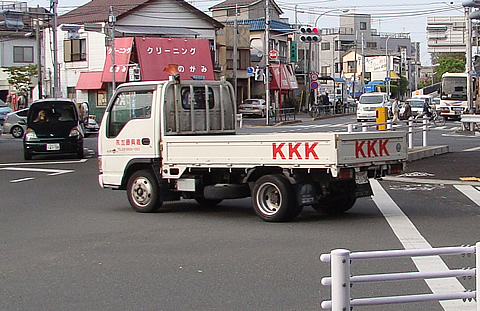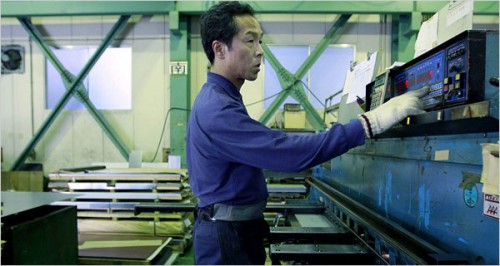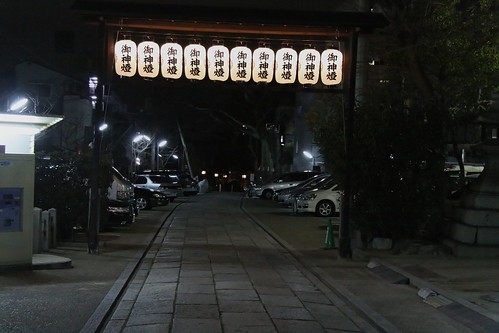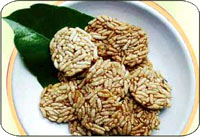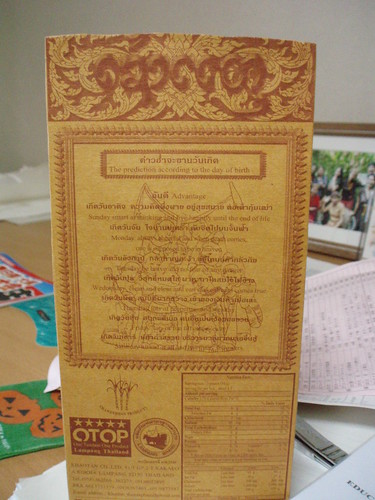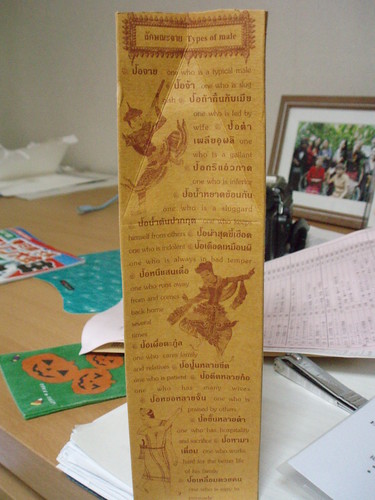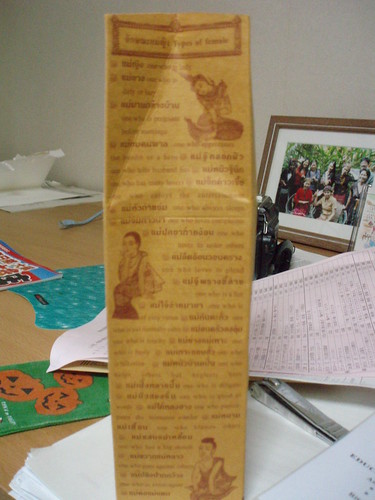(Updated below)
DEAR JAPAN – YOU DO NOT NEED TO WEAR MASKS IF YOU ARE NOT SICK OR PARTICULARLY AT RISK FOR SWINE FLU!!!!!
In Japanese for clarity:
日本の皆様へ:豚インフルエンザを予防するには、マスク着用の効果は低いのである。これはWHOの発表でも明らかであり、日本の各メディアでマスクの推薦は、十分な裏づけがあるとは言えないだろう。
世界保健機関(WHO)及び米当局の米疾病対策センター(CDC)は、マスク着用に関するガイドラインを発表しており、いずれも「どちらかというとマスク着用を推薦しない」との立場だ。主な理由は、マスクを正しく使用しないと逆に危険だからである。CDCによると、インフルエンザの症状が出ている者に対して、一人じゃない時や公共の場にいる時などはマスクの着用を推薦しているが、それ以外のケースについてはあえて「マスクの着用や呼吸装置の使用を推薦しない」としている。オバマ大統領なども言うように、よく手を洗ったり、うがいをしたり、セキをするときは袖で口を防いだりすることで十分らしい。
一方、WHOのサイトをそのまま引用すると「気分が悪くなければマスクを着用する必要はない。患者の面倒を見ている方は、その患者に近くなるときのみマスクを着用し、接触した後にすぐマスクを廃棄し、手を良く洗ってください。気分が悪いときでも出かけないといけないときは、口と鼻をふさいでください。マスクは、いつも正しく使用することが大事。もし誤った使い方をしてしまうと、かえって感染のリスクを高めるのである。」
要するに、日本でみるような、一日中同じマスクを着用し続ける習慣は逆効果ということだ。花粉症対策などでは、マスクの効果はあるようだが、周りの人の顔が見えないなど、社会的デメリットも多いと思う。豚インフルエンザの問題はともかく、日本のマスク文化のメリットがそのコストに見合うのか、疑問を抱かざるを得ない。
English translation:
People of Japan: Sanitary masks have little effect in preventing swine flu. This is clear from WHO reports and indicates that the Japanese media’s recommendations to wear masks do not have sufficient basis in fact.
Both the WHO and American CDC have released guidelines for the use of masks, and they have both taken the position that on balance masks are not recommended. The main reason is that they could actually be dangerous if not used correctly. According to the CDC, masks are recommended for people who have flu symptoms if they are not alone or if they go in public, but for all other cases they specifically state “masks and respirators are not recommended.” As President Obama and others have stated, it is likely enough to gargle, wash your hands often, and be sure to cough into your sleeve.
To quote from the WHO website, meanwhile, “If you are not sick you do not have to wear a mask. If you are caring for a sick person, you can wear a mask when you are in close contact with the ill person and dispose of it immediately after contact, and cleanse your hands thoroughly afterwards. If you are sick and must travel or be around others, cover your mouth and nose. Using a mask correctly in all situations is essential. Incorrect use actually increases the chance of spreading infection.”
In other words, the practice of wearing the same mask all day long as seen in Japan is actually counterproductive. They may have some effect in fighting hay fever, but there are social costs such as not being able to see people’s faces around you. Setting aside the swine flu issue, I cannot help but be doubtful as to whether the benefits of Japan’s mask culture justify the costs.
Even as concern over swine flu appears to be subsiding, Japan remains on high alert. The conspiracy theorist inside me wonders if the hysteria has to do with PM Aso’s fight for political survival, as the economic turmoil has apparently whetted his appetite for building public support through fanning crisis. My case in point was a dead-tree op-ed in the Nikkei last week by a member of the editorial board (I think) who openly wondered if the swine flu would open the door to a glorious LDP-DPJ grand coalition (this was before Ozawa stepped down).
Even without a potential pandemic, many people in Japan wear masks when they are sick or stricken with allergies during hay fever season (starting at the end of winter and lasting off and on through May or so), backed by common recommendations by doctors. In fact, a recent Nikkei article noted that while masks used to be limited to hay fever season and when some people were worried about spreading colds to others, the practice has increased in recent years as people have become more used to them and earlier flu epidemics resulted in official campaigns to encourage people to wear masks. Today, they have become so widespread that people now use masks for non-health related reasons, such as to hide their faces. Some even report prefering to use masks in public to guard from germs in general or just as a kind of coping mechanism. It has gotten to the point that masks are a big business, and various innovations have come out to meet the needs of regular users. A recent article in magazine Hansoku Kaigi (Promotional Meeting) featured the success of campaigns to promote more advanced masks that are designed not to fog glasses (glasses-wearers make up a disproportionate share of mask wearers).
While railing against mask use is probably one of the most tired gaijin complaints, my gripe is not categorical – I am willing to accept actual, justified uses for the masks. For instance, on the topic of hay fever, the US-based Mayo Clinic website (itself sponsored by drug companies) only recommends them “when doing outdoor activities such as gardening.” I will accept that for some people the pollen season in Tokyo can feel like you are constantly working in the garden. Hay fever in Japan is all too common due to the widespread cedar forests planted in the 50s in a failed attempt to develop a homegrown lumber industry. I too have felt as if I might develop hay fever just sitting at my desk. But even still, their widespread use outdoes even this justifiable concern.
Still, my chief gripe with them is only tangentially related to their effectiveness. I simply feel like a society where a third of the people is constantly hiding their faces is kind of depressing and unfriendly. If the masks were saving hundreds of lives a year it would be one thing, but the WHO actually warns against their widespread use!
This revelation really hit home on my way back from the US on a JAL flight direct from New York earlier this week. All the flight attendants wore masks to prevent infection during the height of the alert. While I will not fault them for protecting themselves, the usually sunny customer service came up a little lacking when I couldn’t be sure whether they were even smiling or not.
Worst of all is the uncritical recommendation of masks by the Japanese media (as can be currently seen on the Asahi.com front page), flying in the face of WHO recommendations. Considering that the pharmaceutical companies (who make the masks) are ubiquitous advertisers in the media conglomerates (this blogger caught a documentary with one drug company executive laughing his ass off at how easy it is to sell masks), it is probably difficult to push back if it’s suggested that masks are the answer.
I realize that this post may in fact trigger a backlash among Japanese readers as I am a foreigner. I have heard it said from both Japanese and foreign commentators that using a mask to prevent the spread of germs is a uniquely Japanese form of politeness and selflessness that is hard for foreigners to understand (this phenomenon is also mentioned in the Wikipedia page on masks as a “decisively different” aspect of mask culture as opposed to other countries).
But I feel like this kind of misses the point. According to that same Wikipedia article, other countries, including the US, have seen widespread use of sanitary masks at various times in the past, such as the 1918 Spanish flu epidemic. But that is no reason to support the situation in Japan today.
Supposed folk beliefs and customs in all modern societies are often manufactured or encouraged by marketers with something to peddle (diamond wedding rings, it’s unlucky to light three cigarettes with one match, etc.), and I feel like this is a case in point. In this case, the marketers are preying on perceived danger as a ploy to develop regular customers of an ultimately unnecessary product with side effects that are, as I mentioned, generally depressing and antisocial.
UPDATE: Reuters points out that masks are far from the only official recommendation to prevent swine flu.

